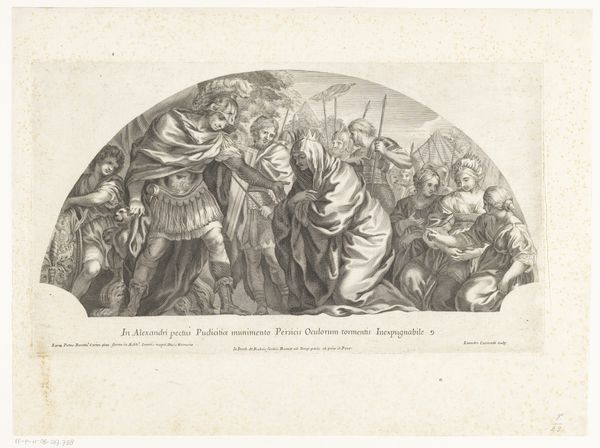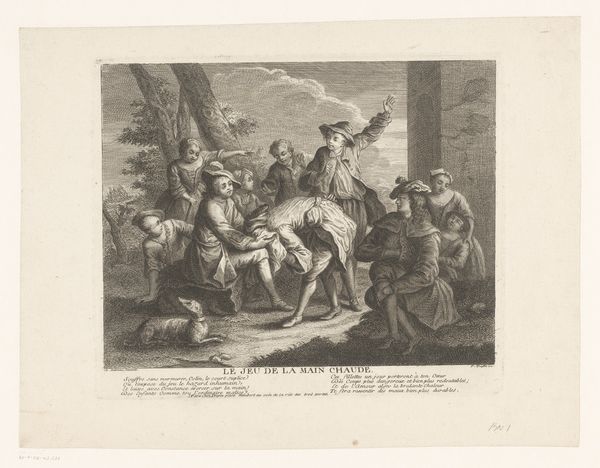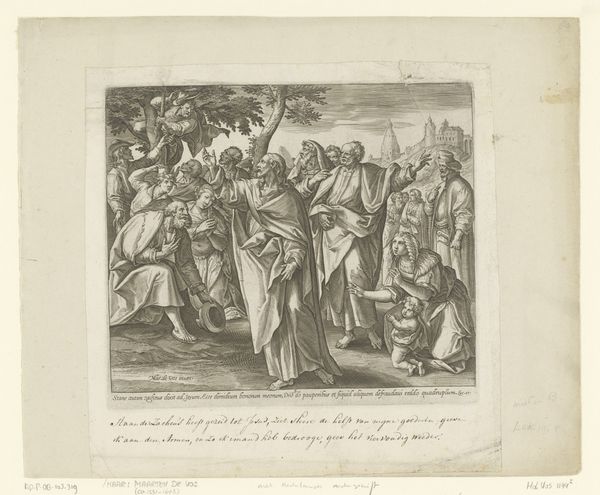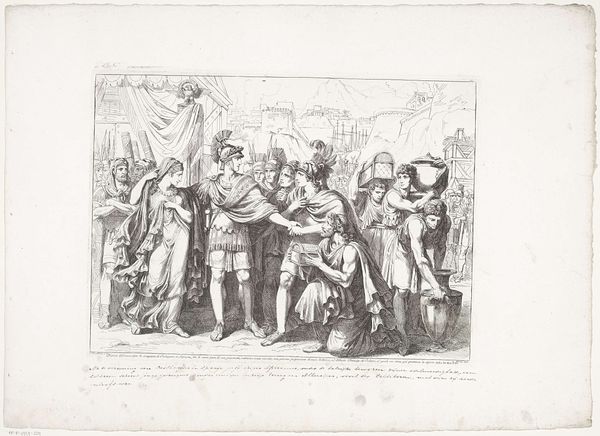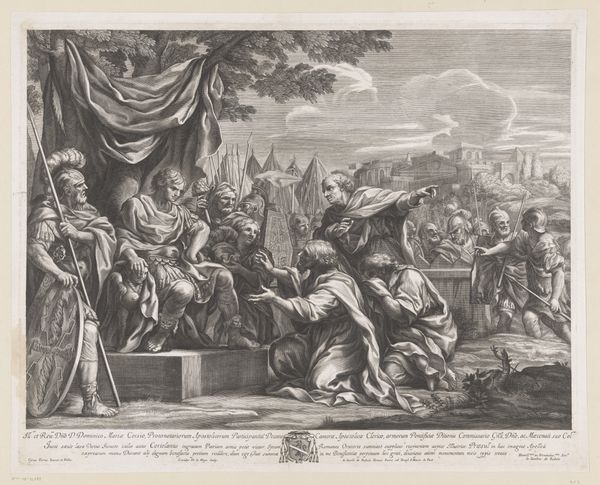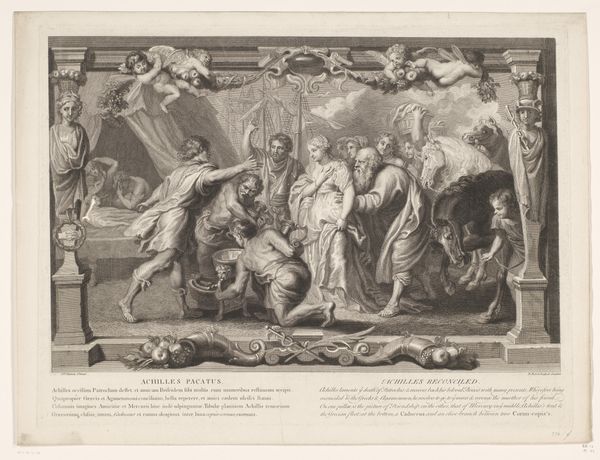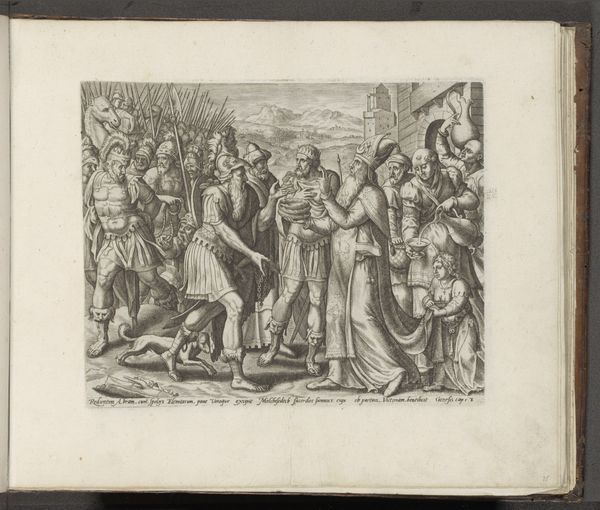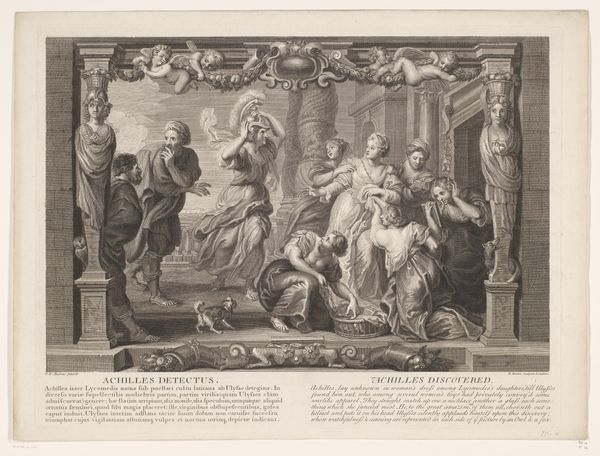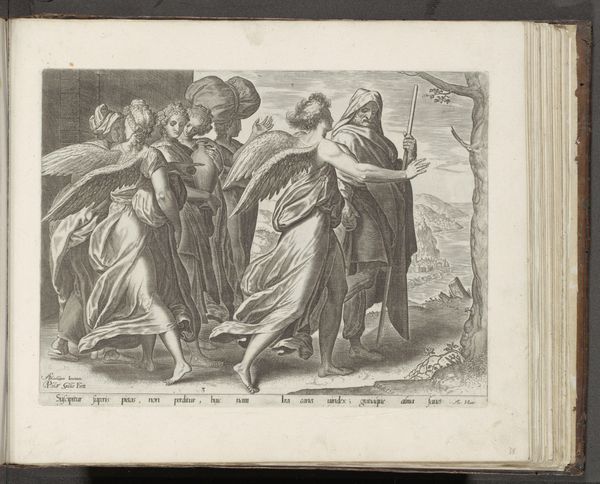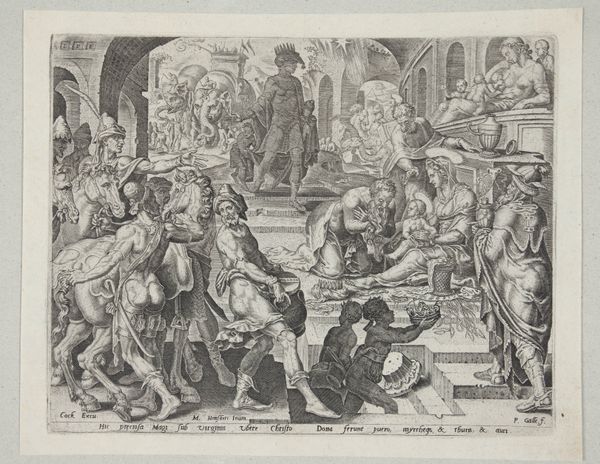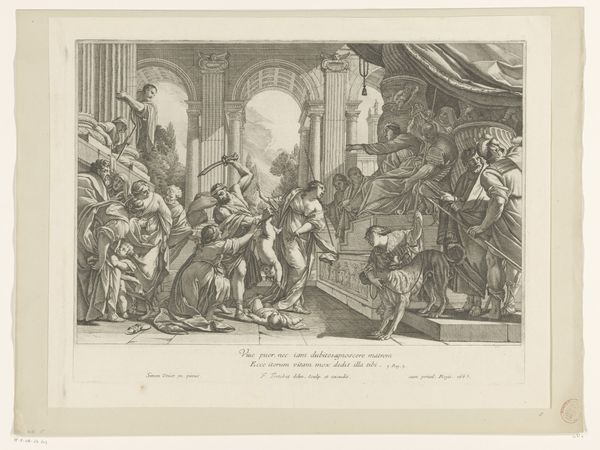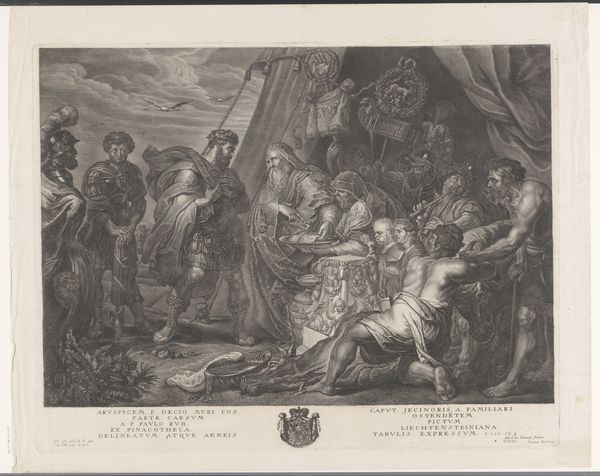
etching, engraving
#
baroque
#
etching
#
classical-realism
#
figuration
#
history-painting
#
engraving
Dimensions: height 250 mm, width 387 mm
Copyright: Rijks Museum: Open Domain
Curator: This engraving, "Captured Woman Before King Cyrus," dating back to approximately 1677, comes to us from the hand of François Spierre and it is held at the Rijksmuseum. Editor: It's stark, isn't it? The scene, rendered in etching, feels imbued with a weighty sense of consequence. Everyone seems frozen, caught in a tableau of power and submission. Curator: The piece exemplifies baroque classicism through Spierre's commitment to balanced composition, yet its engagement with potent symbols and the psychology of power offers much. Look closely: Cyrus, enthroned and regal, extending a hand, whether in mercy or command is yet to be known at a first glance. What are your thoughts? Editor: I think its important to contextualize what we're viewing: this illustrates a historical power dynamic, certainly, but through the lens of gender, it reflects on how female agency has been historically denied. She is reduced to a pawn in the conquering narrative. This engraving visualizes the political stakes of captivity through the representation of the female figure. Curator: Indeed, and the symbols further enhance this idea. Consider the armor adorning Cyrus and his soldiers – signifiers of masculine dominance and aggression set against the soft draping fabric of the captive woman’s clothing, a symbol that carries dual meanings of subjugation but also possible resistance in feminine guise. Editor: I also note how the composition implicates us, the viewers, positioning us as witnesses, if not as judges, of the encounter, mirroring the historical and political landscape where such subjugations were considered unremarkable events, revealing uncomfortable cultural complacencies. Curator: That observation is astute. I find myself now thinking about how historical representations such as this contribute to a kind of cultural memory. How it reinforces certain perceptions about leadership, gender, and even ethics in the historical consciousness of our community. Editor: Which impels me to see past it into a critical engagement with the image as evidence. I believe that seeing it within the contexts that enable these oppressions exposes ways to engage the historical object with greater clarity and ethical grounding. Curator: The complexity in Spierre's vision has revealed fresh meaning today for me. Thanks for helping me think through how symbols carry this power and shape collective understandings. Editor: Of course. It's in understanding those contextual roots, in deconstructing what feels ‘historical’ that we truly discover the present.
Comments
No comments
Be the first to comment and join the conversation on the ultimate creative platform.
